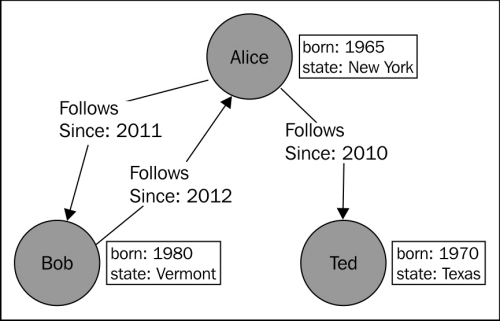A graph is a network of objects (vertices) with directed connections (edges) between them. The following diagram illustrates a simple social graph similar to what one might find on Twitter:

In this example, users are represented by vertices (nodes), and relationships are expressed as edges (connection). Note that the edges in the graph are directed, allowing an additional degree of expressiveness. This allows, for example, to express the fact that Bob and Alice follow one another, and Alice follows Ted but Ted does not follow Alice. This relationship would be more cumbersome to model without directed edges.
Many graph databases follow a property graph model. A property graph extends the basic graph model by allowing a set of properties (key-value pairs) to be assigned to vertices and edges as shown in the following diagram:

The ability to associate property metadata to objects and relationships in a graph model provides powerful support metadata for graph...



